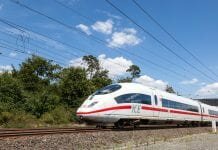
The EU has introduced a new range of fuel labels for petrol and diesel pumps.
The new fuel labels, which will cover petrol, diesel, hydrogen, compressed natural gas, liquefied natural gas and liquefied petroleum gas, will inform drivers of the environmental impact of their chosen fuel. The labels began rolling out last week and will include information on the maximum biofuel content of each fuel, as well as their suitability for different vehicles across the EU.
The majority of Europe’s air quality problems are caused by transport emissions, exacerbated by the increasing variety of fuels available to drivers. The European Commission reports that clearer information on fuel labels at point of sale will help drivers select the appropriate fuel for their vehicle; and raise awareness of their effect on the environment.
The new fuel labels will be divided into three categories:
- Gasoline-type fuels, which will carry a circular label;
- Diesel-type fuels, which will carry a square label; and
- Gaseous-type fuels such as liquefied natural gas or hydrogen, which will carry a diamond-shaped label.
In addition to displaying information on fuel dispensers, complementary fuel labels will be shown on fuel filler caps of newly-built cars; and some vehicles will feature similar labels in their owners’ manuals or electronic handbooks. The labels will be deployed in all EU Member States, EEA countries, Former Yugoslav Republic of Macedonia, Serbia, Switzerland and Turkey.
The design and information content of fuel labels, based on industry standards, was devised by the European Committee for Standardization with input from industry, consumer and civic society representatives. A similar standardised labelling system for electric vehicle power supplies is expected to come into effect in early 2019.
The introduction of standardised, informative fuel labels falls in line with the Commission’s Action Plan on Alternative Fuels Infrastructure; and the Juncker Commission’s “Europe on the Move” proposals for clean, safe transport options.


















